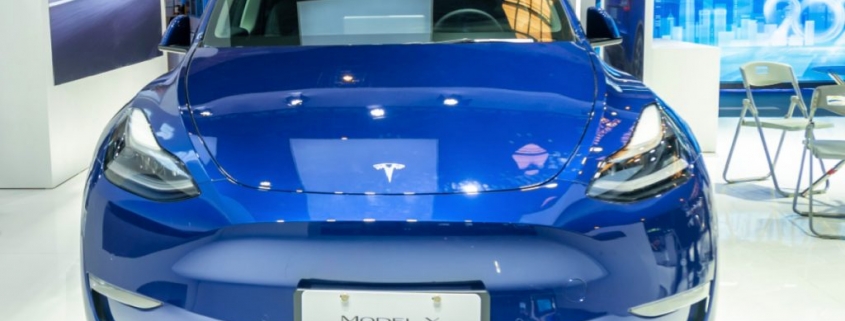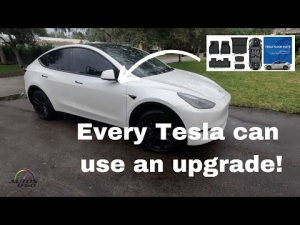Tesla Model Y Explosion Just Got Disproved
Video footage of an incident leading to a Tesla Model Y explosion just cleared Tesla’s name. The Palo Alto, California-based clean energy and electric vehicle company, has been accused of producing cars that are prone to catching on fire. Tesla has repeatedly presented evidence that Tesla models are no more likely to spontaneously combust than gas-powered cars. This new evidence proves that Tesla has been unfairly accused of producing dangerous electric vehicle batteries.
Caught on camera: The real reason behind Tesla Model Y explosion
In March, a Tesla Model Y caught on fire in Dallas, Texas. The way the story was conveyed, it seemed that the fire occurred because of the SUV’s electric powertrain overheating. This is far from the first incident that included a relatively new Tesla Model catching on fire.
According to Electrek, it has been revealed that the fire was actually caused by pressurized gas outside of the vehicle. Despite experts revealing the truth behind the Tesla Model Y fire, many different publications and media outlets stuck with the original story.
The Tesla Model Y actually captured video footage of the scene in Sentry Mode. The video showed that the fire was started inside the Model Y owner’s home before reaching the vehicle. This shocking revelation exposed a huge falsehood in the automotive industry. Just how likely are Tesla Models to catch fire?
How likely are Tesla models to spontaneously combust?

Internal combustion engine vehicles are much more likely to catch fire than electric vehicles. Teslas actually aren’t very likely to catch fire compared to other vehicles. That being said, some electric vehicles like the Chevrolet Bolt are prone to catching fire.
The narrative that Tesla models are capable of bursting into flames at any moment is false, according to data. The reality is, gas-powered vehicles have been catching on fire for a very long time, long before Tesla even existed. Now, we just have social media and online publications that can help single stories spread like wildfire (no pun intended).
When building electric vehicle battery packs, Tesla intentionally isolates cells to avoid a chain reaction if one cell did overheat. Tesla is aware of the risk of potential EV fires and has taken precautions when designing and building the vehicles to avoid vehicle fires. The numbers prove that though Tesla models do catch fire on occasion, they still account for an extremely low percentage of total annual vehicle fires in America.
Is the Tesla Model Y selling well?

The Tesla Model Y is at the top of the heap in electric vehicle sales. It is currently the most popular electric SUV in America despite the hurdles that Tesla has faced with Autopilot and occasional fires. The Tesla Model Y checks all the boxes that a consumer is searching for when EV shopping.
Tesla’s affordable electric SUV is currently only available in Long Range, and Performance trims on the Tesla website in the U.S. The Long Range trim provides a massive 325 miles of estimated battery range. It can go from 0-60 miles per hour in just 4.8 seconds.
The electric SUV’s Long Range trim starts at $53,990. It can be purchased for as low as $49,190 after tax incentives. The Tesla Model Y has stiff competition in the Ford Mustang Mach-E, but other competitors are nowhere near the number of units sold. Ford is also experiencing production issues, so the Mustang Mach-E could be in short supply very soon. The Tesla Model Y reigns supreme despite accusations of being prone to catching on fire. In the case of the flaming Model Y, the battery was not the culprit.
Related: Why the Tesla Model Y is the Best-selling EV of 2021 Thus Far
The post Tesla Model Y Explosion Just Got Disproved appeared first on MotorBiscuit.







